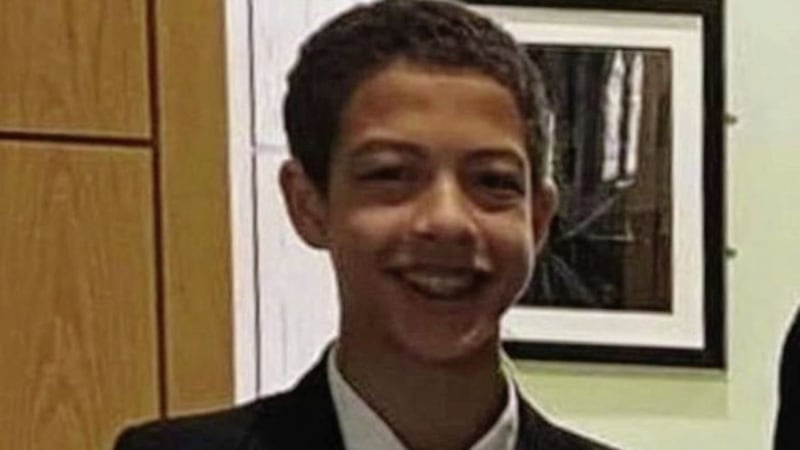A body part removed from Aidan McAnespie after he was shot by a British soldier has been disposed of.
The 23-year-old was shot dead close to a checkpoint on the border at Aughnacloy in Co Tyrone in February 1988 as he made his way to Aghaloo GAC's grounds.
In a letter to the family’s solicitor, State Pathologist for Northern Ireland Dr James Lyness confirmed that a section of the Tyrone man’s rib cage had been removed and later "disposed of".
The body part was removed during a post mortem after his death without the knowledge of his family, which has campaigned for its return for Christian burial.
It was also disposed of without their knowledge or consent.
The pathologist said that the “specimen, which was taken from the chest cage, adjacent to the breastbone, contained the exit bullet wound and its retention would have facilitated any future ballistic investigations and/or pathology examination”.
He said the body part would have been held as part of the police investigation into Mr McAnespie’s death.
He said that while he has been advised that the body part was probably disposed of in the years after the post mortem examination he is “unable to provide any more information as the State Pathologist’s Department does not hold any records in relation to the disposal of retained tissues from that time”.
Tissue from some of Mr McAnespie's major organs have also been retained, which he said “would be standard autopsy practice”.
The family’s solicitor Darragh Mackin said he has asked that the matter be investigated.
"It is deeply concerning that such a decision was taken without any consultation with the family, and it seems, without any notes or records as to the reason.
"As such we have referred to the relevant authorities requesting an immediate investigation,” he said.
Manslaughter charges brought against the soldier who fired the fatal shots, Grenadier Guardsman David Jonathan Holden, were dropped.
He was later fined for negligent discharge of his weapon and allowed to return to duty before being given a medical discharge in 1990.
The British army claimed three shots were fired from a sanger after a gun Holden was using slipped from his hands, which were said to be wet.
It was also claimed that Mr McAnespie was hit in the back by one of the rounds which ricocheted off the road a short distance behind him.
His family reject this account.
In 2009 the British government said it “deeply regretted” Mr McAnespie's death and two years ago attorney general John Larkin referred the case back to the director of public prosecutions.
Mr McAnespie’s cousin Brian Gormley last night said that the removal of the body part and PPS delays in making a decision “is an example of the state’s failure in its obligations”.
A PPS spokeswoman said: “This matter remains under consideration.
“We will wish to discuss progress with family representatives before making any further comment.”

